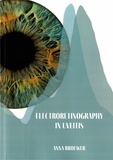Electroretinography in uveitis

Brouwer, Anna
- Promoter:
- Prof.dr J.H. (Joke) de Boer & prof.dr M.M. (Mies) van Genderen
- Co-promoter:
- Dr. ir. G.C. (Gerard) de Wit
- Research group:
- Boer Kuiper
- Date:
- November 10, 2020
- Time:
- 12:45 h
Summary
This thesis investigates the effects of uveitis on the function of the retina using the electroretinogram (ERG). Uveitis comprises a group of diseases with an inflammation in the eye. Uveitis can usually be treated, but permanent damage to the eye can occur in some patients, which sometimes results in retinal atrophy. Ophthalmologists can use several wonderful imaging techniques to assess the effects of uveitis on retinal structure, but sometimes structure and function do not correspond to one another; and retinal function is incredibly important to patients.
Therefore, we recorded an ERG in 200 adult uveitis patients. A characteristic ERG abnormality was observed: the prolonged cone b-wave. This ERG abnormality could be observed in all anatomical classifications of uveitis, including anterior uveitis, where the inflammation is located in a completely different compartment of the eye than the retina.
The prolonged cone b-wave was correlated to the severity of the inflammation in both present and past. Also, a correlation was found between this ERG abnormality and changes in the thickness of certain retinal layers. In childhood uveitis we observed similar ERG abnormalities as in adults.
Often the ERG abnormalities persist, but in some cases the ERG deteriorates, while in others it can fortunately improve. This entails that in some patients the ERG can detect reversible damage to the retina. Therefore, future research should investigate if the prolonged cone b-wave can be used for monitoring purposes in uveitis.